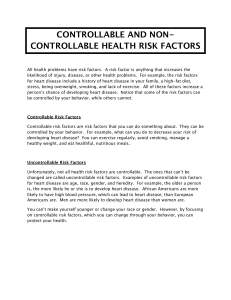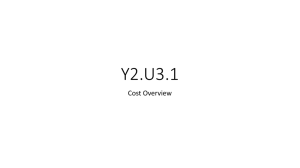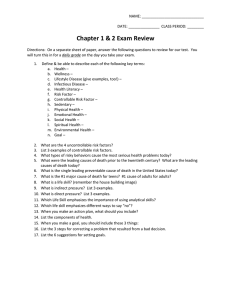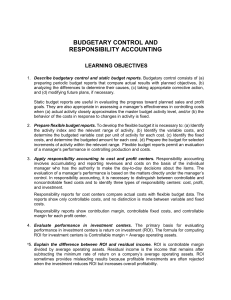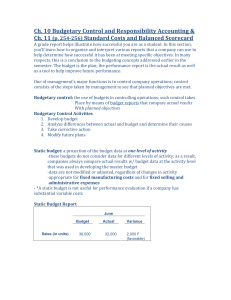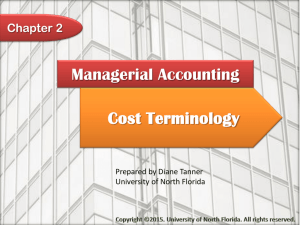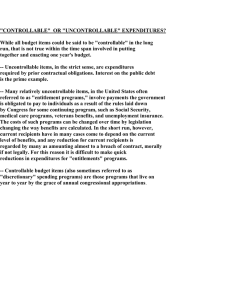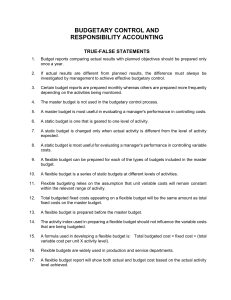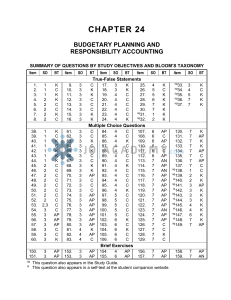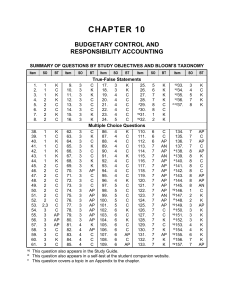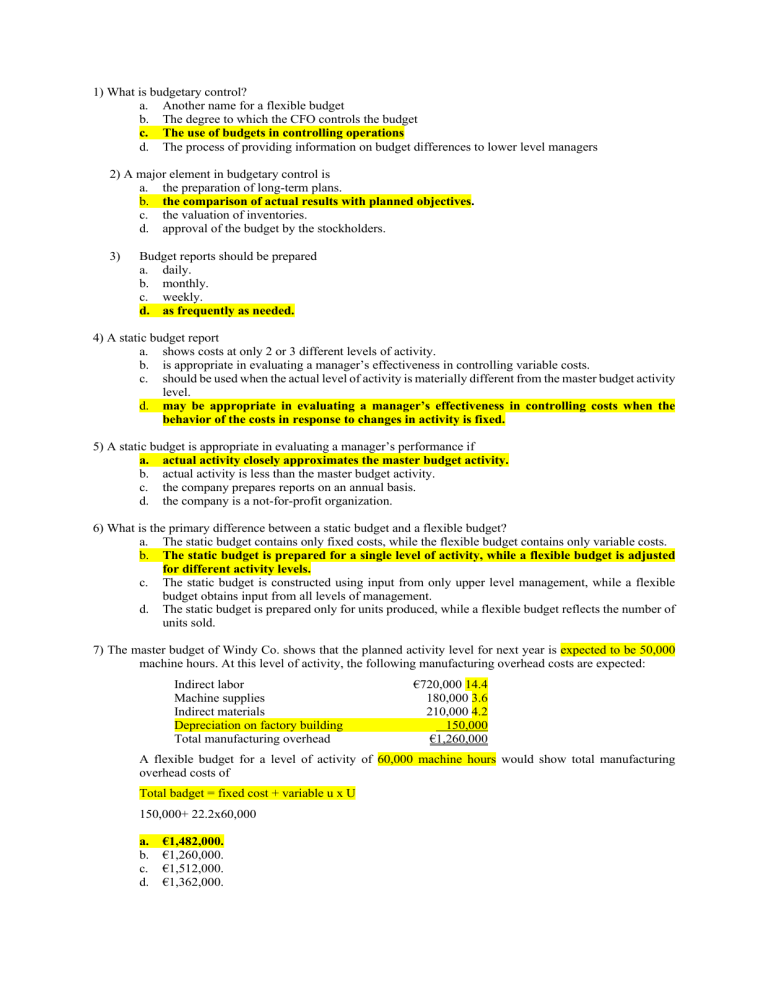
1) What is budgetary control? a. Another name for a flexible budget b. The degree to which the CFO controls the budget c. The use of budgets in controlling operations d. The process of providing information on budget differences to lower level managers 2) A major element in budgetary control is a. the preparation of long-term plans. b. the comparison of actual results with planned objectives. c. the valuation of inventories. d. approval of the budget by the stockholders. 3) Budget reports should be prepared a. daily. b. monthly. c. weekly. d. as frequently as needed. 4) A static budget report a. shows costs at only 2 or 3 different levels of activity. b. is appropriate in evaluating a manager’s effectiveness in controlling variable costs. c. should be used when the actual level of activity is materially different from the master budget activity level. d. may be appropriate in evaluating a manager’s effectiveness in controlling costs when the behavior of the costs in response to changes in activity is fixed. 5) A static budget is appropriate in evaluating a manager’s performance if a. actual activity closely approximates the master budget activity. b. actual activity is less than the master budget activity. c. the company prepares reports on an annual basis. d. the company is a not-for-profit organization. 6) What is the primary difference between a static budget and a flexible budget? a. The static budget contains only fixed costs, while the flexible budget contains only variable costs. b. The static budget is prepared for a single level of activity, while a flexible budget is adjusted for different activity levels. c. The static budget is constructed using input from only upper level management, while a flexible budget obtains input from all levels of management. d. The static budget is prepared only for units produced, while a flexible budget reflects the number of units sold. 7) The master budget of Windy Co. shows that the planned activity level for next year is expected to be 50,000 machine hours. At this level of activity, the following manufacturing overhead costs are expected: Indirect labor Machine supplies Indirect materials Depreciation on factory building Total manufacturing overhead €720,000 14.4 180,000 3.6 210,000 4.2 150,000 €1,260,000 A flexible budget for a level of activity of 60,000 machine hours would show total manufacturing overhead costs of Total badget = fixed cost + variable u x U 150,000+ 22.2x60,000 a. b. c. d. €1,482,000. €1,260,000. €1,512,000. €1,362,000. 8) Under management by exception, which differences between planned and actual results should be investigated? a. Material and noncontrollable b. Controllable and noncontrollable c. Material and controllable d. All differences should be investigated 9) Nikoto Steel Co. budgeted manufacturing costs for 50,000 tons of steel are: Fixed manufacturing costs Variable manufacturing costs £50,000 per month £12.00 per ton of steel Nikoto produced 40,000 tons of steel during March. How much is the flexible budget for total manufacturing costs for March? a. £520,000 b. £650,000 c. £480,000 d. £530,000 10) At 18,000 direct labor hours, the flexible budget for indirect materials is €36,000. If €37,400 are incurred at 18,400 direct labor hours, the flexible budget report should show the following difference for indirect materials: VC= 2 36800 a. €1,400 unfavorable. b. €1,400 favorable. c. €600 favorable. d. €600 unfavorable. 11) Top management can control a. only controllable costs. b. only noncontrollable costs. c. all costs. d. some noncontrollable costs and all controllable costs. 12) Which responsibility centers generate both revenues and costs? a. Investment and profit centers b. Profit and cost centers c. Cost and investment centers d. Only profit centers 13) A manager of a cost center is evaluated mainly on a. the profit that the center generates. b. his or her ability to control costs. c. the amount of investment it takes to support the cost center. d. the amount of revenue that can be generated. 14) To develop the flexible budget, management takes all of the following steps except identify the a. activity index and the relevant range of activity. b. variable costs and determine the budgeted variable cost per unit. c. fixed costs and determine the budgeted fixed cost per unit. d. All of these options are steps in developing the flexible budget. 15) All of the following statements are correct about controllable costs except a. all costs are controllable at some level of responsibility within a company. b. all costs are controllable by top management. c. fewer costs are controllable as one moves up to each higher level of managerial responsibility. d. costs incurred directly by a level of responsibility are controllable at that level.
